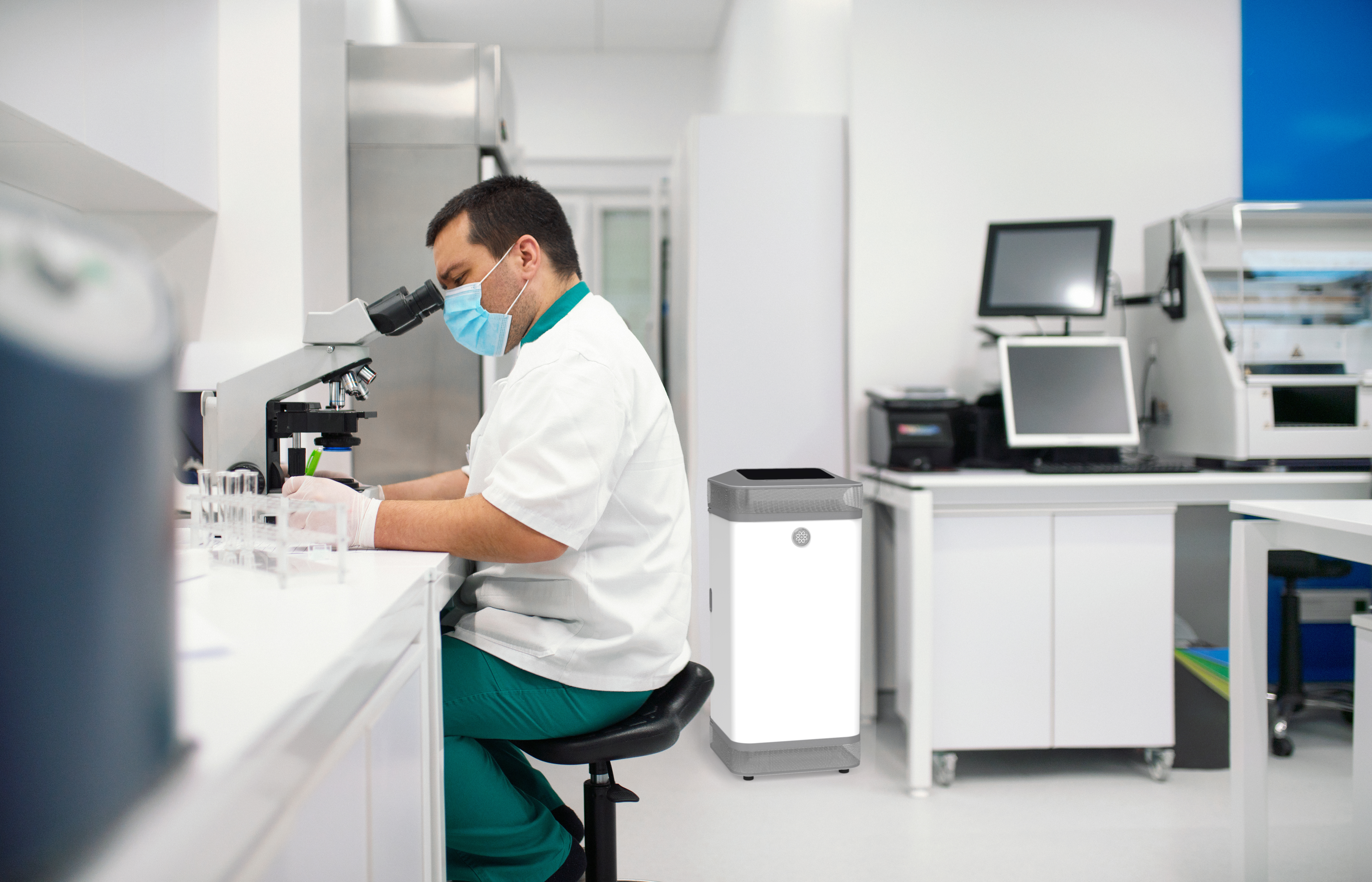In vitro fertilization labs
Improve embryonic development
Reduce airborne pollutants inside in vitro fertilization labs
Even when IVF labs follow strict laboratory practices, airborne pathogens can negatively affect embryonic development.
Indoor contaminants such as VOCs and microbes, and outside air pollution from road work, traffic, construction and insecticides can all lead to fluctuations in IVF success. Pollutants can settle on surfaces and dissolve into the aqueous solutions and oil overlays where fragile embryos are cultured.
VOCs
Neutralize VOCs before they settle on surfaces.
Particles
Augment HVAC systems with portable high-performance HEPA filtration.
Bacteria
Safely inactivate airborne bacteria without chemicals.
Air disinfection for healthcare environments
Wherever people are coming and going, pathogens and pollutants are being introduced to the indoor environment. WellAir's portable air disinfection devices and air cleaning systems use our patented NanoStrikeTM Technology to inactivate aerosolized viruses, bacteria, and fungi, 24 hours a day.
Our Defend range of FDA-cleared Class II medical devices combines our powerful NanoStrike Technology with a triple-stage filtration system. These devices not only inactivate pathogens but clear the air of pollutants such as pollen, particulate matter (PM), volatile organic compounds (VOCs), gases, chemicals, and odors.
Improving Outcomes + Air Quality in an IVF lab
Patki Hospital, located in Kolhapur, India, is a 50-bed super-specialty IVF center, specialized in obstetrics, infertility and gynecology. Learn how they used WellAir technology to reducts VOCs, viral, bacterial and fungal loads resulting in higher clinical pregnancy rates.
